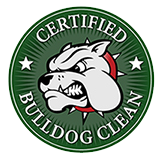What is the first thing you eat after your workout? In order to take full advantage of muscle protein synthesis and restoration of muscle glycogen, it is vital for recovery and muscular growth to make sure you’re reaching for the best possible food or supplement after you’ve worked hard in the gym.
Here’s why it’s so important…
After working out, our bodies have been depleted of glycogen (energy) which we store in our liver and muscles. In this state, our bodies cannot efficiently restore glycogen. Without a quick source of energy, we are unable to initiate an insulin response which sends nutrients (glucose and amino acids) to the muscles so that they can begin repairing themselves to become bigger and stronger. In all cases, exercise essentially tears down old, less adapted muscle in order to rebuild more functional muscle. This phenomenon is called “remodeling”.
So, in order to get the most out of our time spent in the gym, we must fuel our bodies’ post-workout with the correct nutrients; a quick carbohydrate and protein. We want to stick to just a quick source of carb and a protein source because by consuming foods high in fat post-workout, we can potentially slow down nutrient digestion and absorption (which we don’t want).
Post-workout nutrition not only helps increase protein synthesis, but also aids in muscular recovery and reduces muscle soreness. Make sure you are reaching for the best possible option post-workout in order to take full advantage of your body’s potential for muscular development, strength, and recovery.
Sources:
https://www.bodybuilding.com/fun/berardi4.htm
“The Importance of Post-Workout Nutrition”

